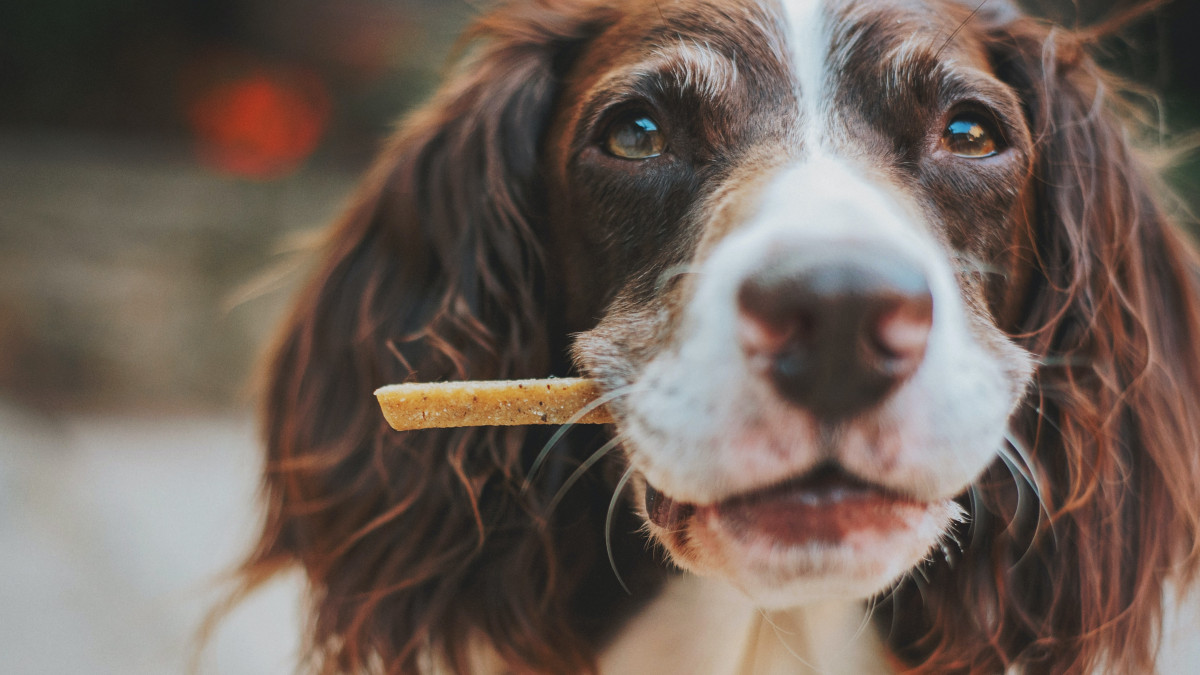Decoding dog food labels

January is renowned for its weight loss and fitness adverts, making us all consider what we're eating whether we want to or not. But have you ever read your dog's food packaging to see what they are actually eating?
This blog will decode those labels to help you make smarter choices when it comes to feeding your dog. Nutrition in Dogs covered why dog nutrition is so important and dietary considerations so make sure you check that out. As I mentioned last time, I am not a vet nutritionist and the information below is based off my personal experience, research and from attending the Butternut Box Nutrition School.
First of all, lets look at what is legally required to be included on all dog food labels:

You might agree that on first glance of the legal requirements, that sounds pretty reasonable and straightforward so let's take a closer look at what this actually means.
Composition VS Category VS Ingredients
Composition: recipe in descending order of weight. If corn is listed first and then chicken, then there is more corn in the food than chicken.
Category: this is where manufacturers group ingredients together, for example; meat and animal derivatives, cereal, vegetable protein extract, fats and oils.
Individual ingredients: provides a more detailed view into what the food is made up of, such as; chicken by-product, corn meal, soybean meal, chicken fat.
Surprisingly, pet food manufactures do not have to list each ingredient individually, they can simply include a composition of the product by category.
By being less specific on each ingredient included, this allows companies to change the recipe without having to update the label. For example using words such as cereal or meat means that the grains and protein used can be changed without informing the public.
Complete VS Complementary Food
Complete means that the food contains all the nutrients your dog needs to support their daily life.
A complementary food means that other food must be added in order to provide a nutritional balanced meal.

The problem with protein
Protein is essential for building and repairing tissues in the body and provides dogs with energy, therefore knowing the quality of the protein you feed is important.
Fresh or whole meat consists of muscle and human edible organs, this is the highest quality protein.
Meat and animal derivatives are the fresh or preserved fleshy parts of animals, and all by-products of the processing of parts of the carcass. This includes all meats, from the best to the very worst.
Meat or bone meal are the lowest quality ingredients such as inedible organs and carcass remains. They are treated to high temperatures, dried and ground to a powder format. This protein powder is then added into the pet food mixture.
To confuse us even further, how manufactures label their food is determined by the percentage of meat in their food:
Flavoured with a meat only requires less than 4% beef in the food
With beef only requires a minimum of 4% beef
Rich in beef only requires a minimum of 14% beef
Beef requires a minimum 26% beef
Take this Harringtons label for example, the front of the bag says RICH IN turkey, meaning only a minimum of 14% of the food has to include turkey. On the back of the bag, it says the composition is 26% turkey and meat meals, of which only 6.5% is turkey and the rest is meat meal (a mixture of any other protein source).

Hypoallergenic VS Hydrolysed Food
Hypoallergenic is not a legal or medically defined term. Foods that are labelled as hypoallergenic have been developed to decrease the likelihood of provoking an allergic reaction.
Hydrolysed dog food contains proteins whose molecules have been broken down into smaller components by hydrolysis. Due to the breakdown, the dog's body is no longer able to recognize the proteins contained in its food as foreign and potentially allergenic substances. Meaning that hydrolysed dog food should prevent an allergic reaction.

Does your dog's food need an upgrade?

As a Butternut Box Ambassador, I have an affiliate link* where you can receive 50% off your first two boxes. There is a range of recipes to try, even for dogs with food intolerances or specific dietary needs such as a low fat diet. The food is delivered frozen, but you can leave it in the fridge to thaw for a week unopened. You can even warm it up in the microwave to increase the aroma for super fussy eaters.
Due to the higher quality ingredients and gentle cooking process, you may find that the cost of feeding your dog increases on Butternut Box. If this is the case, you can feed your dog half Butternut Box and half dried or wet food from another brand. This way your dog still gets the benefit of eating high quality, nutritious food.
50% off your first two Butternut Boxes
www.butternutbox.com/ScentsationalDogs50

*Disclosure: some of the links in this blog are affiliate links, meaning, at no additional cost to you, I will earn a commission if you click through and make a purchase.
Categories: : health
Want support with your dog's problem behaviour?
Complete the history form or get in touch if you have questions
 Rachel Williams
Rachel Williams 
